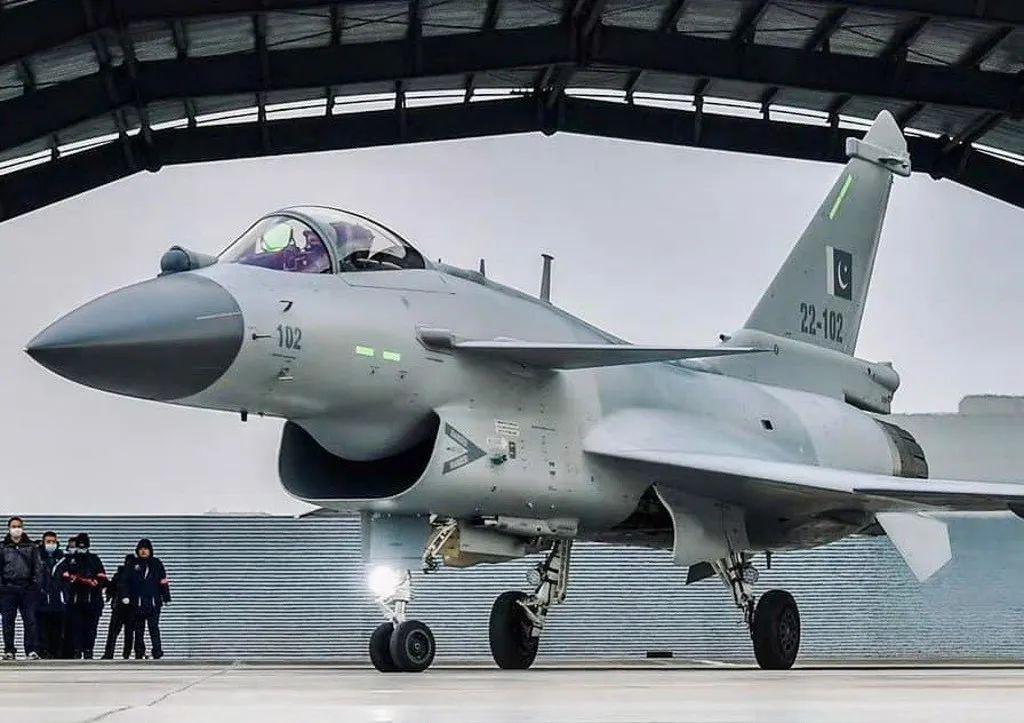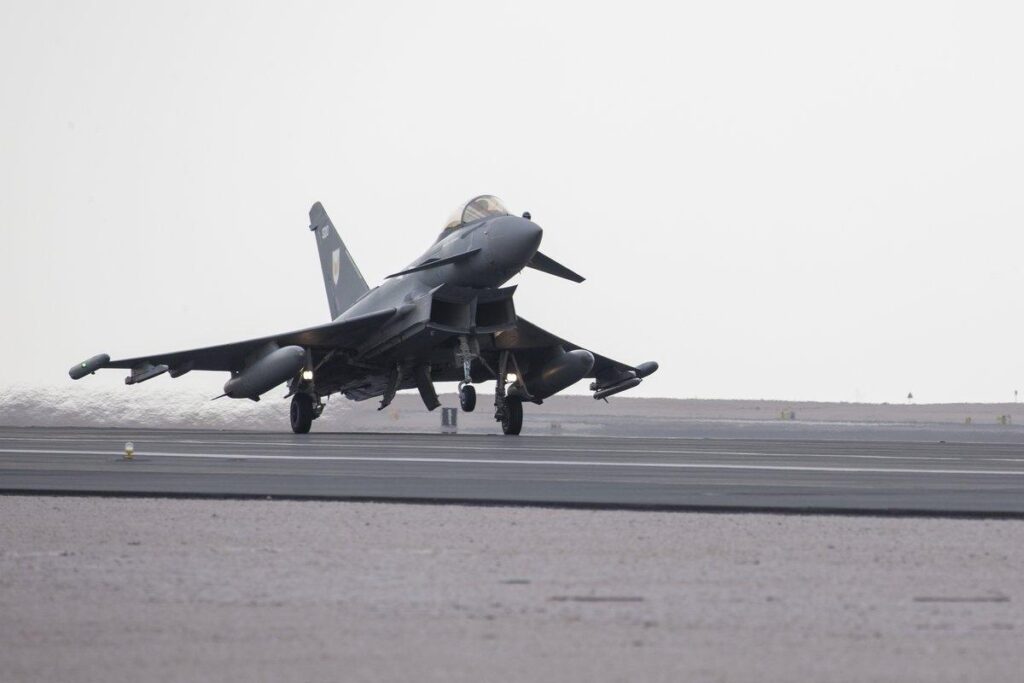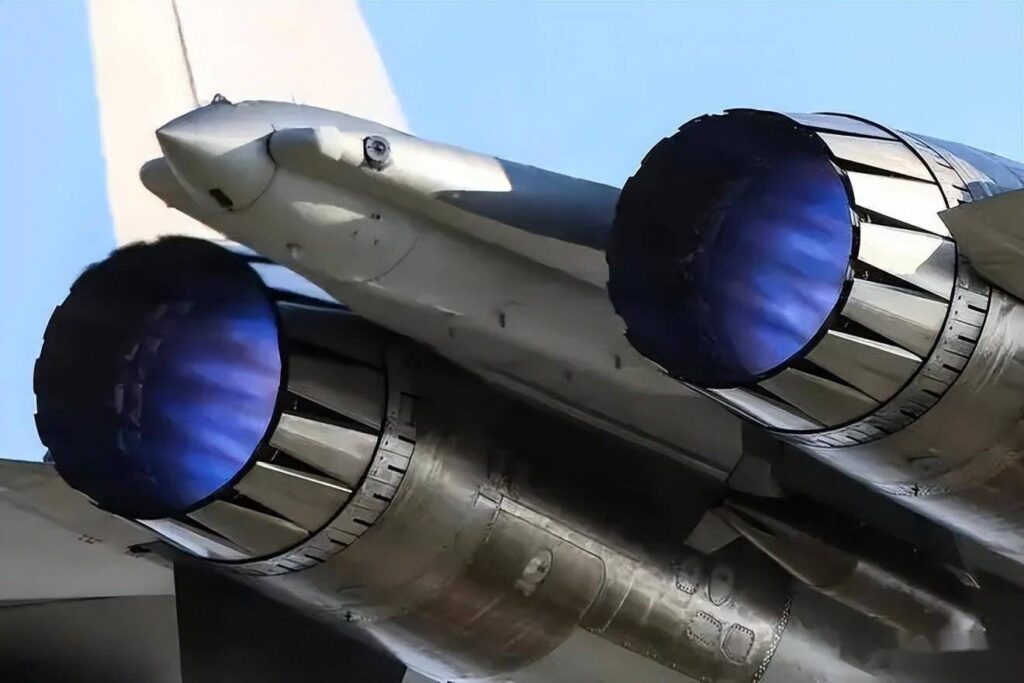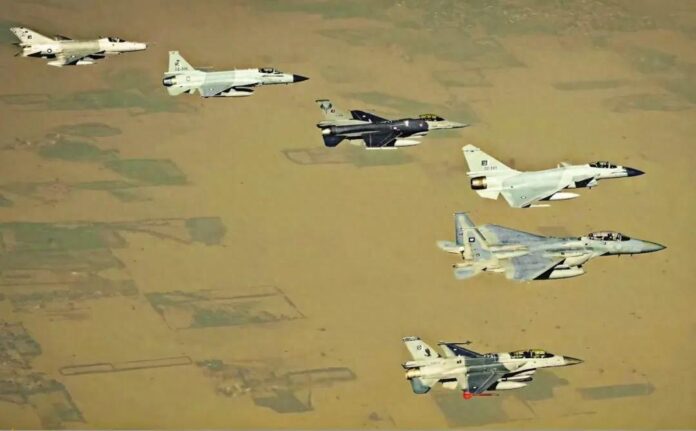The J-10 has undergone three generations of development and has now become the most technologically advanced and combat-capable fourth-and-a-half-generation medium-sized aircraft internationally.
As early as February 9, 2024, the Pakistan Air Force equipped with the J-10CE conducted confrontational training in the Middle East and Saudi Arabia, achieving remarkable results.
Even before the astonishing performance of the J-10CE, the Pakistani military had previously disclosed relevant aircraft data, which was sufficient to demonstrate that the long-criticized “heart” issue of PLA aircraft had been thoroughly addressed.
J-10CE Shines in the Middle East
During the Indus Shield-2023 joint exercise, which Pakistan’s J-10CE participated in, it attracted considerable attention from military experts and enthusiasts from the outset. This exercise marked the first simultaneous appearance of two Chinese aircraft in the Pakistani arsenal: the J-10CE and the JF-17 BLOCK3.

Moreover, other participating Middle Eastern countries, such as Saudi Arabia and Turkey, deployed a considerable number of cutting-edge Western aircraft, marking the first direct confrontation of advanced Chinese aircraft with their counterparts.
The most anticipated segment of the exercise was the confrontation between fourth-and-a-half-generation aircraft, with the J-10CE being a standard example of such aircraft, equipped with the JKL-24AESA radar and domestically developed new-generation air-to-air missiles represented by the Thunder 10E and Thunder 15E.
After upgrading to the BLOCK3 standard, the JF-17 also replaced its radar with the KLJ-7A AESA radar and gained the capability to launch Thunder 10E and Thunder 15E missiles, reaching the technological level of fourth-and-a-half-generation aircraft.
Additionally, the air assets of other Middle Eastern countries participating in the exercise mostly covered all current Western fourth-and-a-half-generation aircraft models:
The Royal Saudi Air Force deployed the F-15SA, a customized version of the F-15 sold to Saudi Arabia by the United States, which is a highly equipped model with a unit purchase price of up to 300 million US dollars.
The Turkish Air Force brought their mainstay aircraft, the F-16C/D BLOCK40/50, which underwent software upgrades enabling the launch of AIM-120-C5 missiles.
It was expected that the classic combination of the F-15SA and F-16C/D would possess considerable suppression capabilities in the air. However, the leaked results after the exercise were shocking.
Military personnel participating in the exercise revealed that Pakistan’s JF-17 BLOCK3 caused significant trouble for both the F-15 and F-16. Despite being a lightweight aircraft, the JF-17 held overwhelming advantages in the beyond-visual-range (BVR) phase.
Furthermore, it was disclosed that the combination of JF-17’s AESA radar and Thunder missiles rendered the F-15 and F-16 virtually defenseless.
The Saudi military also expressed astonishment after the exercise, stating that the radar and electronic warfare capabilities of Pakistan’s JF-17 were truly remarkable, leaving almost all participating countries impressed by the technological prowess of Chinese aircraft.
The JF-17 scored a victory in the Indus Shield and then, in the subsequent Jazir-II exercise jointly held by Pakistan and Qatar, the J-10CE once again displayed its prowess.
Both the Qatar and Pakistani air forces revealed internally that the J-10CE achieved a remarkable 9:0 victory against the Qatari Typhoon fighters in combat.
This news left many military enthusiasts both excited and astonished because the Typhoon fighter has long been regarded as a benchmark among fourth-and-a-half-generation aircraft, and the Typhoons in Qatar’s inventory are high-end models, not European nations’ downgraded versions.

Further details confirmed the significance of the J-10CE’s victory. In the nine confrontations between the Pakistani and Qatari forces, comprising four BVR aerial battles and five close-range engagements, the J-10CE decisively emerged victorious in all.
This implies that not only does the J-10CE possess significant advantages in radar avionics and onboard weaponry, but its own airframe performance is also outstanding. Otherwise, it would not have been able to dominate in close combat against the highly maneuverable Typhoon.
The Transformation of Chinese Aircraft
Qatar’s Typhoon was only inducted in 2022 and is equipped with the Captor-E MK0 radar, which is an AESA radar, far superior to the SRC PD radar equipped by Typhoons in European countries.
However, even with this advantage, the Typhoon and the J-10CE still faced clear disadvantages in BVR combat. After all, the J-10 series has been equipped with the most advanced gallium nitride AESA radar for eight years, and the J-10CE is equipped with the latest model, surpassing European radar avionics technology.
Therefore, it is not surprising that the J-10CE outperformed in the BVR phase. Many military experts predicted this before the end of the exercise. However, the fact that the J-10CE could decisively defeat the Typhoon in close combat was indeed surprising.
Although the J-10 has been praised for its formidable combat capabilities within the People’s Liberation Army, the Typhoon has always been considered the top performer in close combat among fourth-and-a-half-generation aircraft.
The Typhoon’s high-speed and energy maneuverability are excellent, especially in high-altitude maneuvering, far superior to other fighters renowned for their maneuverability, such as the Rafale and the F-16.
In addition to the advantages conferred by canard wings, the Typhoon’s robust airframe performance and the thrust of the EJ-200 engine also play a significant role. Despite both being medium-sized fighters, the J-10’s single large thrust is four tons less than the Typhoon’s twin medium thrust.
Given this thrust disadvantage, how did the J-10CE achieve victory in combat? This brings us to the excellent aerodynamic design of the J-10 and its well-matched power system.
The canard wings of the J-10 can generate coupled lift with the main wings during high-speed flight, efficiently enhancing the maneuverability of the aircraft in the subsonic and transonic phases. In contrast, the primary purpose of the Typhoon’s canard wings is for high-speed trimming, with the aircraft’s maneuverability relying entirely on the power of the EJ-200 engine.
In other words, once the J-10CE engages the Typhoon, dragging it into a close-range engagement and transonic or subsonic combat, it can achieve a decisive advantage with better lift coefficient and power coordination.
The current military thrust of the domestically produced WS-10B turbofan engine installed on the J-10CE reaches 14.5 tons, with an afterburner thrust of 16 tons, which is entirely sufficient for a medium-sized fighter like the J-10CE.
The Pakistani military has also published data on the power parameters of the J-10CE, suggesting that the WS-10B endows the J-10CE with better acceleration and climb performance than the F-16, breaking the past dependence of Chinese aircraft on foreign products.

With the successive maturity of the WS-10C and WS-15 technologies, the J-10 series is bound to undergo further thrust upgrades, reaching new heights in flight performance.
It is worth mentioning that during the Jazir-II exercise, the squadron of Qatar’s Typhoon fighters was a joint unit of the United Kingdom and Qatar, with a significant portion of the pilots being British.
This implies that the J-10CE’s victories likely occurred against a purely Western combination of aircraft and pilots, further proving the transformation of Chinese aircraft.
